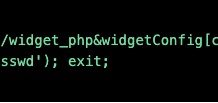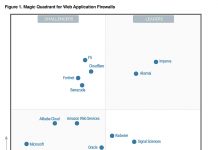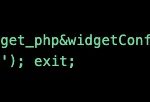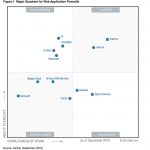There are lots of maxims in the startup world about passion, patience and perseverance — but most of the time it is just lip service. Rarely do founding teams stick together and fight though more than a decade of ups and downs. But that is exactly what the Centrify founders have done for the last 14 years, beginning inside Mayfield’s offices in March of 2004.
Success is the result of perfection, hard work, learning from failure, loyalty and persistence. — Colin Powell
To help reset the context, in 2004 Lance Armstrong won his 6th Tour de France and the Boston Red Sox won the World Series for the first time since 1918. The venture / startup community was reeling from the burst of the dot com bubble. Google was still private (IPO in Aug 2004) and the launch of Amazon Web Services was a few years away (2006).
Microsoft was the dominant force in enterprise technology. They were busy on various updates to their core Windows Server and Exchange franchises. With Exchange 2000, the user / identity directory infrastructure was separated out as Active Directory (AD). Enterprises were initially unwilling to deal with the complex migration and therefore mostly deferred their upgrades. The key point of adoption for AD was the (Titanium) release of Microsoft Exchange Server 2003, which included incremental migration, enhanced disaster recovery and improved client capabilities like Outlook Web Access.
Unbeknownst to most enterprises this highly strategic move by Microsoft put them in a very powerful position — Active Directory was set to become the default identity store for most enterprises.

Tom Kemp, Adam Au and Paul Moore started Centrify based on this unique insight into the strategic nature of AD, combined with direct experience around Microsoft’s historic reluctance to provide first class support for non-Windows environments. Tom was previously part of the executive team at NetIQ and helped that company successfully navigate a strategy alongside Microsoft.
In the early years Centrify built a strong business connecting AD to the multitude of infrastructure environments – initially different operating systems. By leveraging offshore development (thanks to co-founder Adam Au), the company delivered dozens of integrations that enabled enterprise customers to extend AD into non-Windows environments.
But while Identity and Access Management (IAM) has been always been a key component of enterprise security, there were macro issues (financial/credit crisis 2007-2009) as well as other security priorities. Palo Alto Networks rose to prominence (IPO in July 2012) as enterprises replaced legacy firewalls with next generation firewalls that could secure application traffic. FireEye Networks (IPO in September 2013) and a key acquisition Mandiant (Dec 2013), helped enterprises recognize and block advanced persistent threats and the role of state actors. Finally mobile security concerns escalated as employees brought smartphones into corporate environments and used them for increasingly sensitive information. MobileIron (IPO in June 2014) and AirWatch (VMware acquisition in February 2014) were the biggest winners of this new enterprise mobility management category. All of these new security categories took the lion’s share of the security budgets and thus overshadowed identity and access management.
Consequently, the company experienced intermediate revenue plateaus (it happens more often than people admit). They successfully navigated complex strategic partnerships, financings and even layoffs. Management did an amazing job of recognizing the market realities and appropriately balanced cash requirements with growth initiatives.
Success is not a matter of mastering subtle, sophisticated theory but rather of embracing common sense with uncommon levels of discipline and persistence. — Patrick Lencioni
But everything started to change in June 2013 when Edward Snowden released a massive trove of classified documents. He almost single-handedly reawakened the market for IAM security technology. From that point onward there have been a continuous stream of data breaches at large consumer brands like Home Depot, Sony, Target, Anthem and more recently Equifax. These incidents have further highlighted the need to properly secure identities and access.
But managing user names and passwords across different systems and applications has become significantly more challenging with mobile devices, SaaS applications and cloud infrastructure. In addition, the magnitude of the problem has increased and now extends well beyond just employees to partners and customers.
As the market evolved, Centrify dramatically expanded their product portfolio into a complete identity platform which today helps enable a Zero Trust Security model that was pioneered by Google (BeyondCorp). The work Centrify did across operating systems allowed them to cover Apple iOS and Android platforms – and to extend (through a collaboration with Samsung) into enterprise mobility management. They also aggressively moved into privileged access for cloud environments and single sign-on for 100s of SaaS applications.
The markets around identity security are expanding. Both CyberArk (IPO in June 2014) and Okta (IPO in April 2017) have performed incredibly well. However CyberArk is even older than Centrify, since it was founded in 1999. Consequently their architecture is being challenged by new solutions like Vault, who are increasingly targeting devops as the point of insertion. Identity is also positioned to play a bigger role in network security and broader access management to services and data. Applications are being rewritten as cloud native and distributed systems, so enterprises are being forced to rethink secure network access to services, machines and devices in addition to users. New technologies like Consul, Envoyand Prisma are poised to play a key role.
Centrify has announced their acquisition by Thoma Bravo and so the end of one phase, but also the beginning of a new phase. It has not always been easy, but it has been an incredibly fulfilling experience working together since day one.
Congrats Tom, Adam, Paul and everyone that has been along for the journey!
Robin Vasan is an investor & entrepreneur. The views in this blog are his own and not attributed to Centrify. The original post of this guest blog can be found on LinkedIn.
The post Persistence Pays Off appeared first on Secure Thinking by Centrify.

















